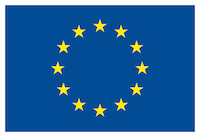About SENSECO
- Home
- About SENSECO

The COST action "Optical synergies for spatiotemporal SENsing of Scalable ECOphysiological traits" (SENSECO) is a COST Action running from October 2018 until October 2022. SENSECO brings together scientists from more than 30 partners in Europe, neighbouring countries and international partner countries. The chair of the action is Dr Martin Schlerf and the vice-chair is Dr Jochem Verrelst. The grant holder is University of Valencia (Dr Jochem Verrelst).
![]() #senseco-news cahnnel has the most recent news
#senseco-news cahnnel has the most recent news
Why SENSECO?
Vegetated ecosystems are an important component of Earth's land, largely mediating gas and energy exchange at the atmosphere-biosphere-pedosphere interface. The acquisition of information about vegetation status, health and photosynthetic functioning is fundamental to assessing the dynamic response of vegetation to changing environmental conditions.
Spatially continuous information of vegetation traits at ecologically relevant scales can be collected from various Earth Observation (EO) instruments, especially the newest Copernicus Sentinel-2 (S2) and Sentinel-3 (S3) and FLuorescence EXplorer (FLEX) satellites. The images are taken at different spatial resolutions (i.e. 10-300 meters) and at different recurrences (i.e. daily to weekly) and are converted from raw data into eco-physiological information through an increasing number of available retrieval and scaling methods. Additional measurements stem from low-altitude and proximal sensing from drones and Eddy Covariance (EC) flux towers.
Multi-sensor concepts (e.g. S3-FLEX, International Space Station) are becoming more and more available calling for a synergistic data use. Overall, this opens opportunities and challenges to resolve critical and still open spatiotemporal scaling questions, i.e. how to accurately measure eco-physiological variables and processes at various scales.
What are the SENSECO objectives?
The scientific aims of this COST action are threefold:
- to ensure that the practices of optical EO measurements of ecophysiology are compatible at various spatial and temporal scales, enabling synergistic multi-sensor use and transferability between European research groups;
- to guarantee the transfer and knowledge exchange on scaling methods, e.g. through physical modelling (e.g. radiative transfer modelling, RTM) and identified protocols that include traceability and uncertainty analysis; and,
- to coordinate overarching analyses in a European context to strengthen the European leading role. These activities will ultimately lead to a clear-cut advance in the knowledge of capturing scalable ecophysiology dynamics.
SENSECO's main objectives in brief are:
- to tackle the <link>scaling gap between leaf and satellite measurements in order to link driving mechanisms at the leaf scale to photosynthesis at the global scale;
- to improve the <link>time-series processing of satellite sensor data for modelling vegetation processes related to seasonal productivity;
- to improve <link>synergies between passive optical EO domains;
- to ensure measurements <link>comparability across different scales, space and time.
About SENSECO
Optical synergies for spatiotemporal SENsing of Scalable ECOphysiological traits (SENSECO) is a COST Action, which brings together scientists from Earth Observation to understand better vegetated ecosystems.

Funding
SENSECO is funded by the Horizon 2020 Framework Programme of the European Union.

Quick links
Contact
Send an email to: contact@senseco.eu
